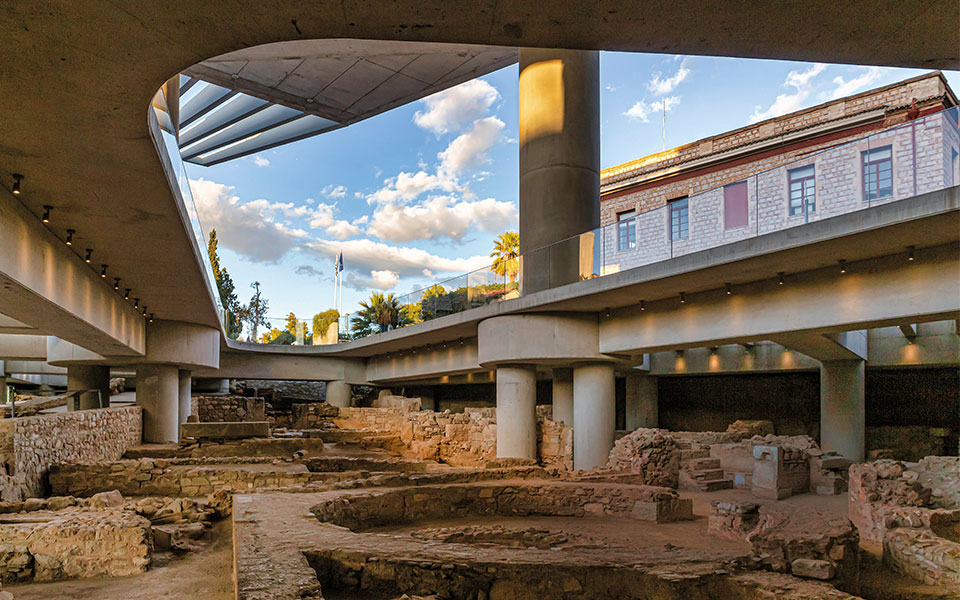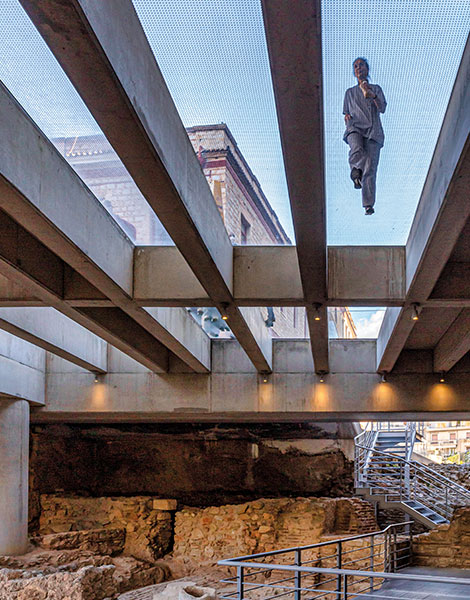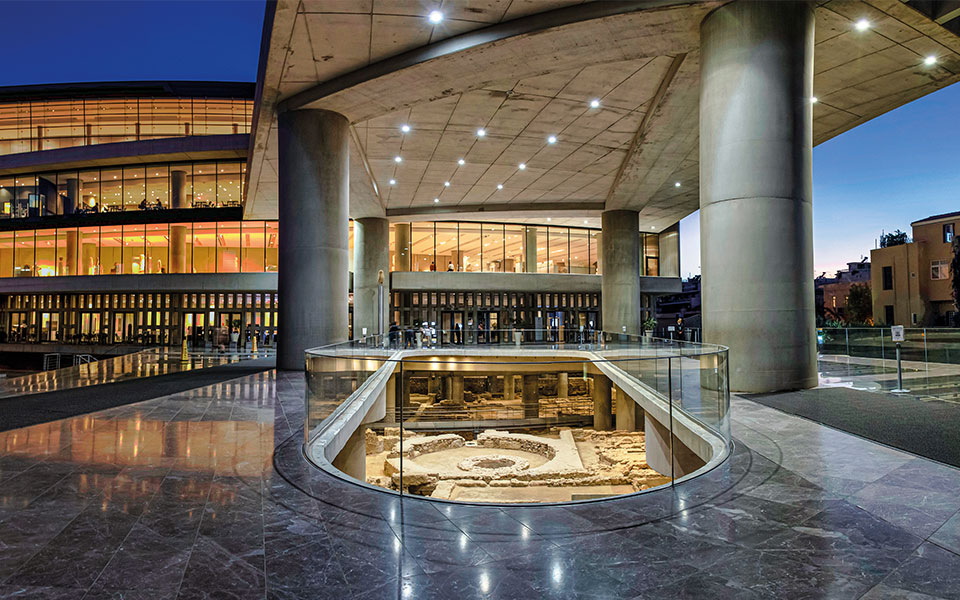Athens’ Most Coveted Culinary Hotspots
Athens sizzles with culinary creativity, blending...

© Perikles Merakos
The world-famous Acropolis Museum contains much more than the breathtaking exhibits displayed in its hallowed galleries. First discovered in the late 1990s, the archaeological site underneath the museum offers visitors a rare glimpse into ancient urban life immediately south of the Acropolis. Comprising a maze of streets, houses, public and private baths and latrines, workshops, and tombs, the “Makrigianni site” is a palimpsest of human activity that stretches back to the 4th millennium BC. Much of what is visible today dates to the Early Byzantine period, including the ruins of an urban villa with mosaic floors and a private bathhouse (Building Z; 5th-6th century AD).

© Perikles Merakos

© Perikles Merakos
The excavation site opened to the public on June 21, 2019, ten years after the Acropolis Museum opened its doors. Visitors can view the site through the protective glass from above or walk on the ancient streets and the raised metal walkways that cross the ancient neighborhood. Instead of covering the entire area with protective fill, a team of archaeologists, architects, conservators, and engineers devised an ingenious plan to incorporate the ancient Athenian neighborhood into the museum complex, pinpointing the right spots for the colossal pillars to support the new building and creating the impression that the structure is “floating” above the site.

© Perikles Merakos
Excavation of the Makrigianni site unearthed multiple building phases and a significant number of artifacts, including sculptures, ceramic vessels and coins which will soon be displayed on-site. Incorporated within the city walls towards the end of the 5th century BC, the neighborhood soon became densely populated, functioning as an important thoroughfare to the public areas on the southern slopes of the Acropolis. Over time, it grew affluent, boasting large luxurious houses with colonnaded courtyards, private wells and latrines. Most impressive is the complex network of cisterns and connecting sewage pipes, which is still visible today.
Athens sizzles with culinary creativity, blending...
A forgotten world comes to life...
Antiques expert and collector Dimitris Xanthoulis...
From bustling street markets to Hydra’s...